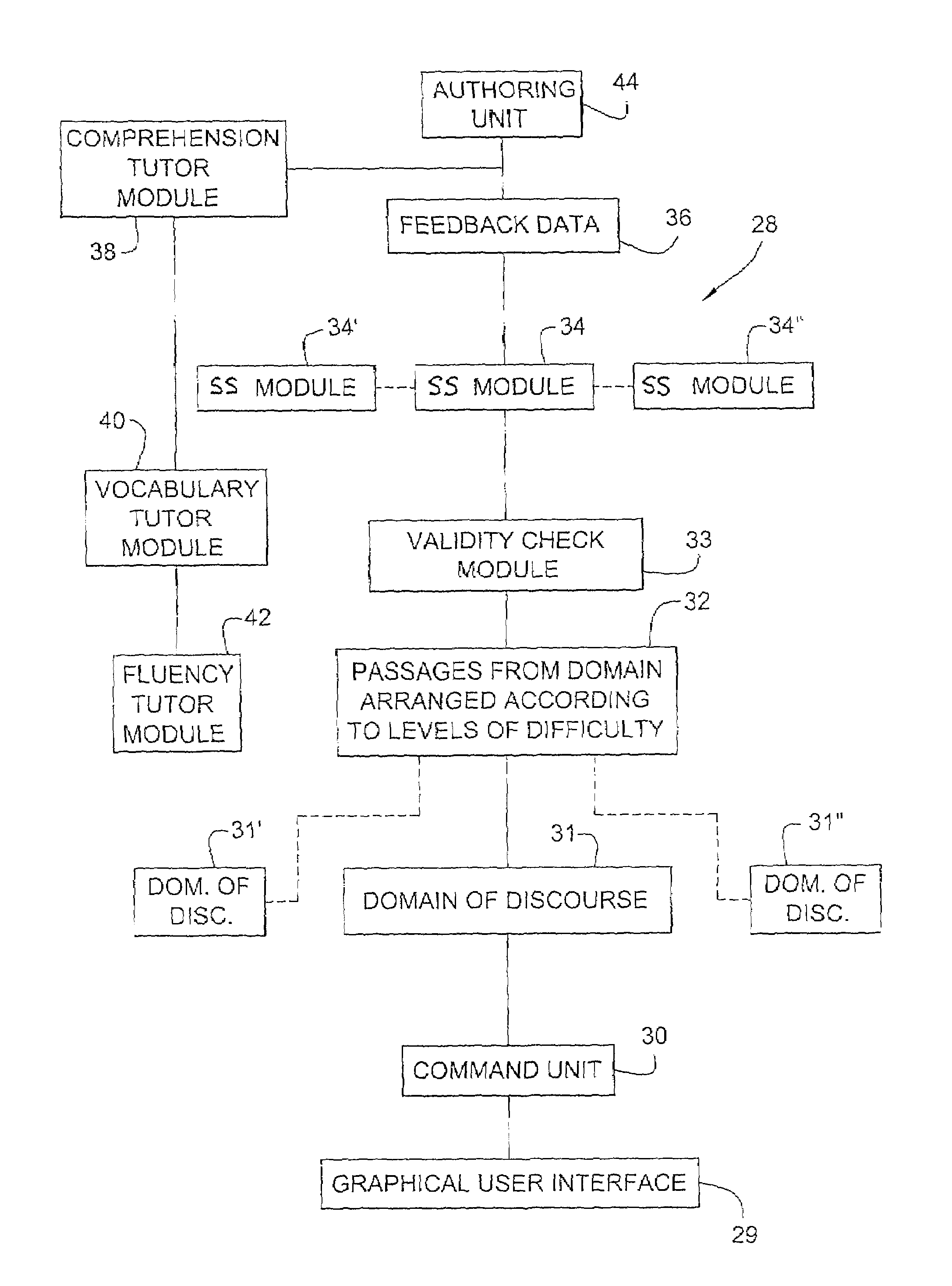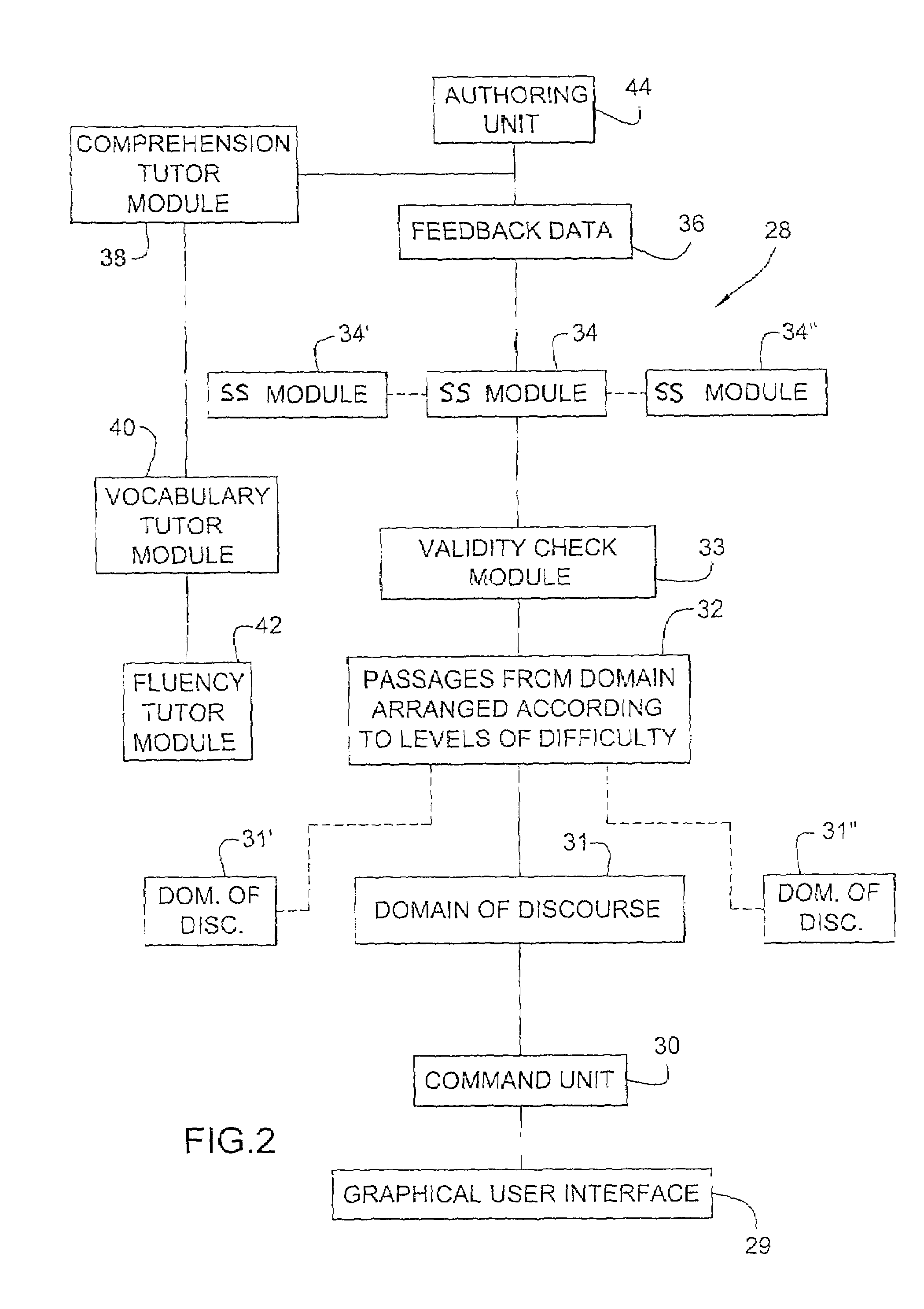Automated, computer-based reading tutoring systems and methods
a reading tutoring system and computer-based technology, applied in the field of literacy tutoring, can solve the problems of high labor intensity, too simplistic, and require a high level of effort and expense that is impractical for most applications, and achieve the effects of effective identification of the most appropriate, less costly development and administration, and improved comprehension skills
- Summary
- Abstract
- Description
- Claims
- Application Information
AI Technical Summary
Benefits of technology
Problems solved by technology
Method used
Image
Examples
Embodiment Construction
[0032]The reading tutoring systems and methods according to the present invention are implemented using a conventional computer system, such as computer system 10 illustrated in FIG. 1. Computer system 10 typically includes a monitor 12 for visually displaying information to a user, a central processing unit 14, internal memory 16, a keyboard 18 for inputting information to central processing unit 14, and a mouse 20 for selecting icons displayed on monitor 12. A disk drive 22 and modem 24 of computer system 10 provide alternate avenues for data input to the central processing unit 14. Computer system 10 may include a voice recognition system 25 with a microphone input 27 for voice input. Computer system 10 communicates with a user graphically via monitor 12, as well as audibly. A printer 26 of computer system 10 allows output data to be embodied in tangible print form. The reading tutoring systems and methods of the present invention can be embodied in a stand-alone program for comp...
PUM
 Login to View More
Login to View More Abstract
Description
Claims
Application Information
 Login to View More
Login to View More - R&D
- Intellectual Property
- Life Sciences
- Materials
- Tech Scout
- Unparalleled Data Quality
- Higher Quality Content
- 60% Fewer Hallucinations
Browse by: Latest US Patents, China's latest patents, Technical Efficacy Thesaurus, Application Domain, Technology Topic, Popular Technical Reports.
© 2025 PatSnap. All rights reserved.Legal|Privacy policy|Modern Slavery Act Transparency Statement|Sitemap|About US| Contact US: help@patsnap.com



